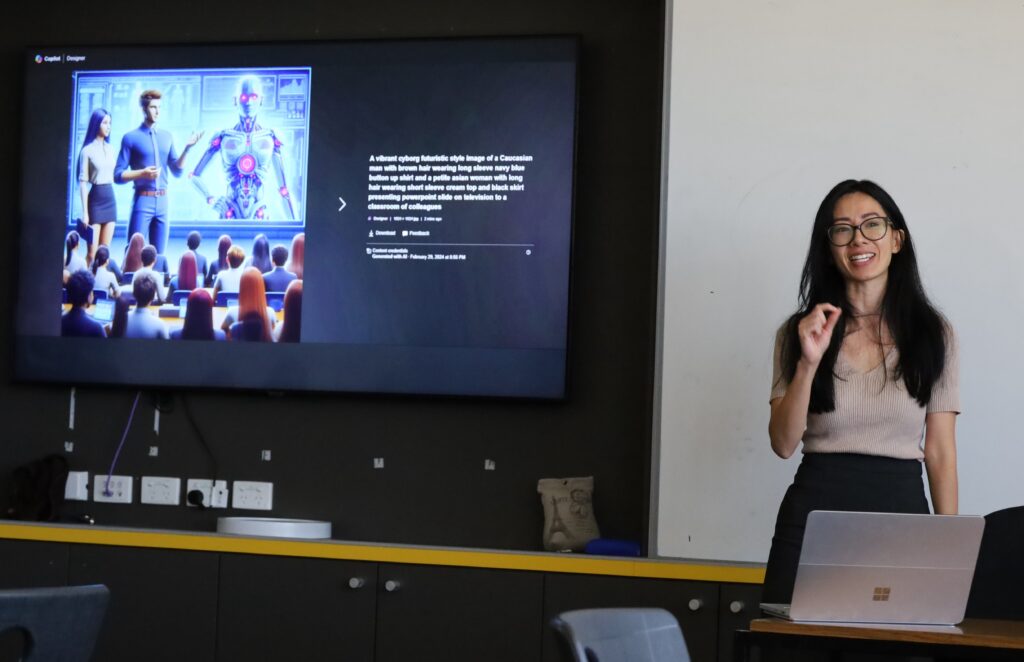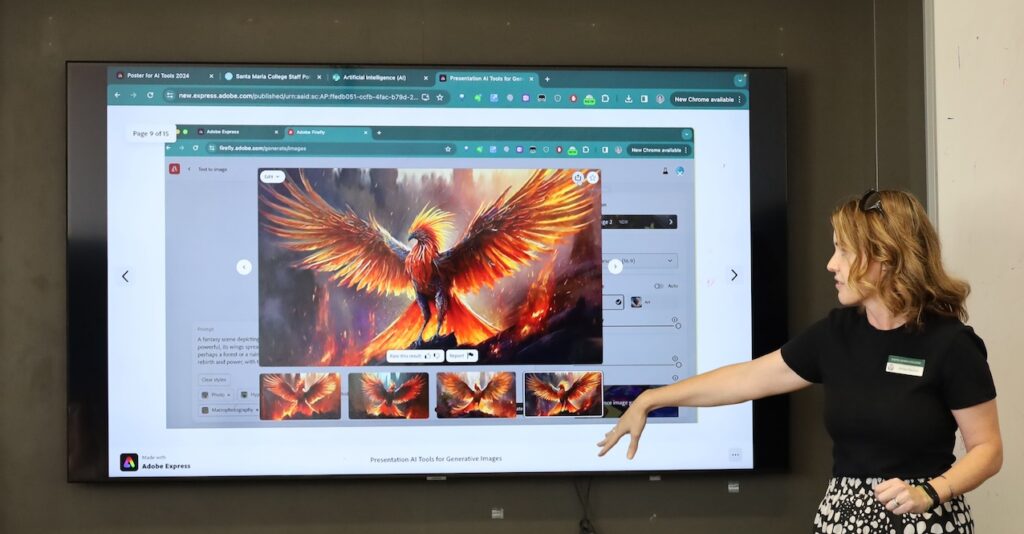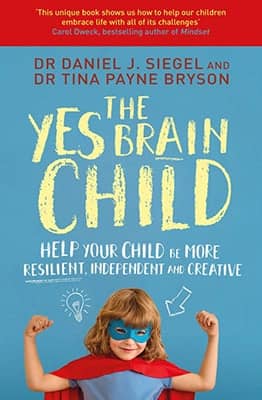Putting Staff at the Forefront of AI

Love it or loathe it, AI is here to stay. AI enables the functioning of Siri, Alexa, GPS and driverless cars and the platforms providing different AI are rapidly expanding.
In the ever-evolving landscape of technology, Artificial Intelligence (AI) stands out as a transformative force in education. At Santa Maria College, we recognise AI’s immense potential for enhancing the educational experience—not just for our students but for our staff as well.
However, integrating AI into daily operations and learning comes with its challenges. Our commitment to a planned program for AI implementation reflects our dedication to leveraging these tools effectively and ethically. The allure of AI in education is undeniable.
We have set out to differentiate ourselves by adopting a structured approach to our rollout. Our primary focus is first on empowering our staff. By initially introducing AI to our staff, we prioritise their understanding, exploration, and utilisation of its capabilities both in and beyond the classroom before we prioritise student use.
Banning AI is not the solution; responsible, informed use, guided by a planned approach so that students reap the benefits of AI rather than focussing on how AI will enable cheating needs to be the focus for educators in a world where:
- Globally, job postings mentioning GPT or ChatGPT increased 21x since November 2022 (Linked In – Future of Work)
- 1 million new jobs based on AI are expected by 2027 (World Economic Forum)

At Santa Maria College we have begun by:
Step 1: Forming an AI Committee
The AI Committee’s mission is to facilitate a collaborative environment where the potential applications of AI technologies are explored thoughtfully. By involving staff members from different areas of our school, we ensure the implementation of AI technologies is aligned with our shared values and goals while being responsive to all staff members’ needs and concerns. The interest among staff was indicated by 20 staff, both supporters and resistors volunteering to be part of the committee.
Step 2: Identifying Tasks that AI can assist with
At the core of our AI integration framework is a focus on our staff. Before considering how AI could benefit our students, we asked, “How can AI assist our educators and administrators in fulfilling their roles more effectively?”. By addressing this question, we ensure that any technology we introduce serves to support and enhance the work of our dedicated staff rather than adding to their burdens. Some examples of tasks we have identified include creating presentations, developing teaching resources and assessment rubrics, creating and manipulating images and writing documents.

Step 3: Identifying potential AI Software
With the speed of development in the AI field, new software is released every week in the race to be the leader in the field, an issue for the security and control of this software. With a multitude of AI programs to choose from we are exploring six that the AI Committee in consultation with our Tech Team and other schools have decided are a good starting point for staff to try.
Step 4: Providing a safe space for your staff to try
To support our staff, our AI Professional Learning Day aimed to equip every staff member with the knowledge, skills and confidence to try AI. The day commenced with a short presentation on our road map and our Guiding Principles for AI use. Our Exploration Hubs were a highlight of the day, with staff learning from each other. Staff signed up for sessions to try two different AI software platforms depending on the tasks they wanted to prioritise for support from AI. Talent levels were beginner to expert users, all supporting and learning from each other. The facilitators provided prompts to get exploration underway, and then it was up to participants to have a go!

Step 5: Developing clear Principles of Use
The Principles of Use provides guidance for staff on important areas such as:
- Privacy
- Accountability
- Bias
- Ethical use
- Security
- Cost
With the establishment of these principles, we aim to create a secure and encouraging setting for delving into the advantages of AI.
As we embark on this journey of AI integration, we are guided by the vision of a school community where technology enhances human effort, not replaces it. In embracing AI, we are not merely adopting new tools but opening doors to new possibilities for innovation, engagement, and excellence in education. Our planned approach demonstrates our commitment to navigating the complexities of AI integration with foresight, responsibility, and a shared sense of purpose. Implementation in teaching and learning will be our next stage.
Together, we are setting a new standard for the future of education in which AI plays a key role.

Combating The Attention Span Crisis In Our Students – Jennifer Oaten
It is no secret that attention spans have been steadily declining, especially among younger generations growing up immersed in digital technology. The average person’s attention span when using a digital device has plummeted from around two and a half minutes back in 2004 to just 47 seconds on average today – a dramatic 66% decrease over the past two decades.

With Laurissa Knowles From Valley Depths to Mountain Peaks (1993)
Laurissa Knowles (1993) has had an incredible career journey so far, from Santa Maria College Teacher to Celebrant and Councillor.

Elevating Spaces: Diana Ellis’ Signature Touch & Architecture Magic
What happens when you mix a love for art, travel, nature, and creativity with construction and building? You get the essence of Diana Ellis’ career!
- Featured
Author: Santa Maria College
Santa Maria College is a vibrant girls school with a growing local presence and reputation. Our Mission is to educate young Mercy women who act with courage and compassion to enrich our world. Santa Maria College is located in Attadale in Western Australia, 16 km from the Perth CBD. We offer a Catholic education for girls in Years 5 – 12 and have 1300 students, including 152 boarders.






